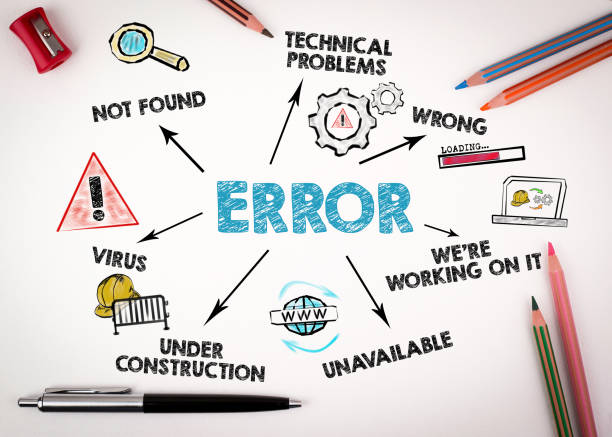Web Development in 2022: Latest trends, mistakes, and misconceptions
- Sheryl Jones
- February 22, 2022
- 7 Minute Read

If you’re a business owner planning to create a web app for your business or a web developer, you must learn all the trends and details about web development in 2022 before you start. Due to multiple tech trends in the industry, managing a web development project has become difficult. Many owners and CTOs go through FOMO (fear of missing out) as they don’t want to lose out on anything fresh that others are following and benefitting from.
Web development is more than just a set of trends to keep an eye on. To build a website or a web app that will help you produce more leads and convert them, you’ll need to keep an eye on a few factors – myths, errors, and the recent trends in web development to design software that performs well, is efficient, and secure.
Web Development – An Overview
With years of technological advancement, web development is one such industry that undergoes major changes called trends each year. Web development enables businesses to create apps and websites – digital software, to spread awareness of their services and products. In addition, websites help companies clearly understand how their products and services fit people’s lifestyles. However, all this can only be achieved if you consider the latest trends and create your website using the latest technology.
Web development is about creating a website/app for the business, improving its design and looks, ensuring seamless integration, enhancing functionality, running fast, solving problems, and improving performance. However, while there are several sources of information about web development, there could be a few misunderstandings as well.

Misconceptions about Web Development
We were astonished to discover a lot of information about web application development trends that have no clear connection to the web or are out of date. Here is a list of Misconceptions that you may have regarding Web Development
1. Blockchain
This technology has nothing to do with web development and is only required in the field of certificate authentication.
2. The architecture can be devoid of servers
This method is ideal for developing apps or prototyping and will never require additional expansion or growth. In the case of businesses that aim for expansion and growth, they will be compelled to convert from serverless to API/containers, which will be a difficult and costly transition. So, it is better not to go for serverless architecture from the beginning.
3. Virtual reality
This may be the current trend, but exclusively in the gaming industry. VR is rarely incorporated into web development and requires costly equipment on the part of the user, which must always have tremendous power for real-time rendering. As a result, VR for the web is not considered a mainstream direction.
4. Motion User Interface
This concept simply aids in the development of code for certain transitions and animations and is just a part of web app design trends, not of web development. It’s one of several useful techniques for cutting down on coding time, adding animations to your program, but that cannot be a trend. The same can be said for dark-themed or low-light UI.
5. Internet of Things
It works vice-versa. You don’t need the Internet Of Things for Web Development; instead, it’s the other way around. IoT is a general term for items with electronic devices for exchanging data with servers over the Internet.

6. Single page application
Single-page applications or SPA is not a trend in web development – it is more of a mandate. It is all about updating the displayed information without refreshing the page and it is not as easy as building other apps. The good thing is that the front-end and back-end developers can now work on SPAs at the same time.
Common Mistakes of Today`s Web Developers
Here are some common errors you can avoid in reviewing, repairing, or updating the recent web development area:
1. Using the most up-to-date tools as soon as possible
The most common blunder is believing that new technology will provide you with a competitive advantage. The same goes for using redundant technology over and over again. You must create a balance between the two as new technology is frequently unproven, unexpected, and just too hazardous to use in actual business endeavors.
2. No code compression
There are times when launching an early-stage development code that runs slowly, takes a long time to download, and requires more traffic. They need to consider minifications and bundles before they push these codes into production.
3. Non-responsive layout
You may find projects on the web front-end that are not adaptable. You can ignore the mobile views of very early versions of web products. However, once the mobile version requirements are displayed, it’s much easier to implement them if you understand how to combine the components of the mobile screen and write the code first.
4. Overly complex design
It is discouraged to implement a design that can be unpleasantly surprising, too sophisticated or unusual, or with a high cost of implementation, as it can become difficult to follow the same pattern with every change in trend.
5. Superficial competence
Developers don’t always have the opportunity to understand every nook and cranny of new frameworks, libraries, and development techniques before laying their hands on a new project because these innovative approaches are adopted for business regularly. That is not a mistake, but only if the stakeholders or decision-makers are informed of the potential hazards associated with such an approach.
6. Debugger keyword
Developers may forget to remove the debugger keyword from their code before releasing it to production. If left unchecked, the app will stop when the Inspector Tool opens in your browser. Therefore, if such code appears in production, your app will be unsafe. Automated tools are typically used to avoid these cases. However, if they are missing or need to be set in your project, you will need to manually monitor such things.

7. Skip the supported browser list
A common mistake is to skip the list of supported browsers as these are rapidly becoming obsolete or unpopular.
8. Using Architecture that is not scalable
Every little project makes the same mistake: its architecture does not scale well. Yes, this method can help you build tiny apps faster, but whenever new requirements emerge, you’ll find yourself spending insufficient time simply and money to make this design valid and functional. Even so, you’ll end up with redundant codes and hard-to-find defects, and adding new components will be a chore.
9. Single CSS
It is not advised to use a single CSS for every component and page in your app. It may seem useful at first, but as your project grows, maintaining such code becomes more complex.

10. Lack of team communication
It’s a mistake to skip discussions about code writing styles and CSS-style naming and coding that teams should follow or avoid effective technological tools that make code that style or standard. You should always negotiate these things before starting a project and stick to the agreed rules and principles.
Also read: 7 Must-have qualities to look for when hiring developers
Top Web Development Trends in 2022
1. Security
Data security needs to be a trend all the time. As security experts, we know a lot about companies that are hacked, ransom demanded, and completely unaware of policies on access and security practices. And the issue isn’t simply the existence of evildoers someplace out there or the inadequacy of development tools. Cybercriminals utilize sophisticated technologies to monitor the Internet 24/7 for systems with security flaws. The notion that you won’t be hacked since no one cares about you is outdated. You must apply the finest security measures on your web app or website with access control, event logging, input validation, penetration testing, data encryption, distributed processing, VPN and so on.
2. Artificial Intelligence (AI)
AI is a trend in its own right, but many areas can and are already used in web development, such as chatbots, search, and personalized customer experiences. With artificial intelligence development company, products can gain an edge over their competitors and dramatically improve many indicators of effectiveness. Chatbots are still operational on various websites, despite the slight criticism it faced. AI applications reduce support center costs and enhance consumer trust. Applying NLP processing tools to the way chatbots speak, makes them indistinguishable from humans. This makes AI not a trend but a standard. Additionally, AI and AI writing assistants are also being used nowadays to develop the content of websites thus taking web development to a new level..
3. Progressive web applications
Simply put, a PWA is a web app that uses a set of specific technologies to provide an equal or same user experience as a native app. Such apps can be installed, have a mobile-friendly responsive design, are extremely safe, and make your network independent. Progressive web applications were introduced in 2018, and you will be rampantly hearing about them for years to come. However, building a progressive web app is quite expensive. The idea behind PWAs is to provide a native experience for web apps.
4. Voice search
With the rise of voice assistants and smart speakers in homes around the world, the majority of app-visitors or website audiences certainly prefer voice search to type. Today, entrepreneurs, where many users use search boxes to navigate web products, are also increasingly interested in performing and delivering voice searches. Setting up a tool that provides speech recognition right away is not enough; it should also work properly on mobile platforms and deliver a more comfortable and faster user experience than usual. Voice search should be competent enough to understand unusual language queries, synonyms, and expressions.
5. Accelerated Mobile Pages
AMPs were first introduced in 2016 to mitigate the app or website’s bounce rate and page load time. Google introduced the concept which was all about displaying a cached model of your content which is relatively saved on their servers. AMP is still used by some prominent news organizations. Previously, you had to use this technique if you wanted your work to appear in Google News. But Google said in the summer of 2021 that this is no longer necessary. Even if it’s no longer a trend over the years, it’s an additional technology worth considering if you’re starting a new online project with lots of resources.
Conclusion
There is no single trend, tool, or cheat sheet that will guarantee that your web product will be reliable, safe, and generally successful. What counts most is your engineers’ or web developers’ real experience and expertise in developing similar items. And sometimes the only way is to seek help from professional services or web development services to work on a project, its potential pitfalls, and opportunities and see transformations within the time frame and budget.

Thank you for submitting the details!
We will keep your information safe. Feel free to contact us with any questions at hello@uplers.com
Please check your email for next steps shared by Robert.


















